5 Ways AI Can Save Teachers Time: Designing New Lessons
Generative AI can give teachers time-saving superpowers. Here are 5 ideas to use AI to design and launch your next lesson.
Educators know the importance of crafting captivating and inventive lessons that engage and excite students, but are also grounded in standards and the acquisition of skills and knowledge. Nonetheless, devising novel ideas can be a taxing, time-consuming, and exasperating task. As promised by previous posts, however, generative AI can be a key that unlocks time for teachers.
Here are five ideas on how teachers can employ AI as an assistant to design a new lesson:
1. Brainstorming Lesson Ideas
Today, my daughter was extremely excited about doing a gel electrophoresis lab in her Biology class. She was so excited that she took pictures and videos of the lab and shared them with the whole family (middle school brother included). I asked ChatGPT for 5 ideas for teaching gel electrophoresis.
Prompt:
Can you please give me 5 ideas for teaching students about gel electrophoresis? (notice that I try to use polite manners even when talking to a robot!)
The Result:
2. Creating Goals for a Lesson
We've all posted "I can" statements to the board at the front of the room. AI can help you write those statements as well. This time around, I tried Bing's new chatbot (which is powered by OpenAI's newest algorithm). Tip: If you want to try Bing's chatbot, try using Microsoft Edge instead of Safari or Chrome as your browser.
Prompt:
I am teaching a 10th-grade US History Class. Can you please write 3 I CAN statements that I will share with students when teaching them a new lesson about the causes of World War I?:
The Result:
Notice how Bing even offers suggested follow-ups? The natural follow-ups include asking for resources and assessments. Unlike ChatGPT, you'll notice Bing citing its sources.
3. Align Goals to Standards
As Bing tells you above, I can statements are student-friendly statements. What if we want to make sure the I can statements really align with state standards? Since I'm working in Ohio, I asked Bing to align the above I Can Statements with Ohio Social Studies Standards.
Prompt:
Can you tell me which Ohio Social Studies Standards do these I Can statements align to? (Not grammatically perfect, but that’s exactly what I typed in. )
The Result:
Again, it cited and linked its sources (the Ohio Department of Education). It also totally ignored (or understood) my grammatical typo in the prompt. I did double-check these state standards and double-checked with a long-time colleague who teaches US History in Ohio.
4. Brainstorming Materials for a New Lesson
In my classroom life, I taught Visual Arts. Mostly Digital Art, Design, and Animation., but also photography, sculpture, and a few others. Ordering new materials to start the year is an absolute pain. No one wants to prepare orders in the spring only to come back in the fall to find out that needed materials are missing. I asked ChatGPT to brainstorm materials for a lesson to help ease ordering.
Prompt:
I am teaching a lesson on mural painting to high school students. They will eventually paint a large mural on a piece of plywood to be displayed on a wall in the school. Can you please generate a list of materials that we will need?
The Result:
I love that the bot even wished me luck at the end of the response!
5. Creating Writing prompts
I approached this particular prompt with a lot of skepticism. I wanted to see if AI could generate some interesting writing prompts for a well-studied text. Fahrenheit 451 is a popular text in many high school classrooms. The study of "Fahrenheit" is well-trodden grounds. The internet is littered with resources and written responses about this book. Creating a prompt that gets students to try something new with this text is challenging.
Prompt:
Next week, my 9th-grade students will begin a new writing project in my English class. They just read Fahrenheit 451. What are some creative writing prompts that will get them to share more about their personal interpretations and heartfelt connections with the text?
Notice that I threw in some words that might be hard for a writing robot: personal interpretations... heartfelt connections... Let's see what happened:
The Result:
Something interesting has happened here. I think this response shows the potential of AI as a timesaver for teachers. The prompts, at their core, are fairly common. They generally ask students to analyze themes, settings, and characters. However, the AI has done some brainstorming for the form the prompt might take (poem, short story, diary entry, song, etc.) and parsed it with some kind of prompt. I followed some of the citations used here, and none featured the prompts verbatim.
Concluding Thoughts
Teachers often turn to internet searches when starting a new lesson. They're searching for new approaches to lessons. However, what was once a time saver can become a time suck. Combing through pages and pages of resources and ideas can be exhausting. Using AI to start a new lesson goes above and beyond a simple internet search. Generative AI can provide short, simple answers. It condenses the content of the web for you. It can parse different ideas to give you something a bit new. In short, generative AI can give teachers time-saving superpowers.



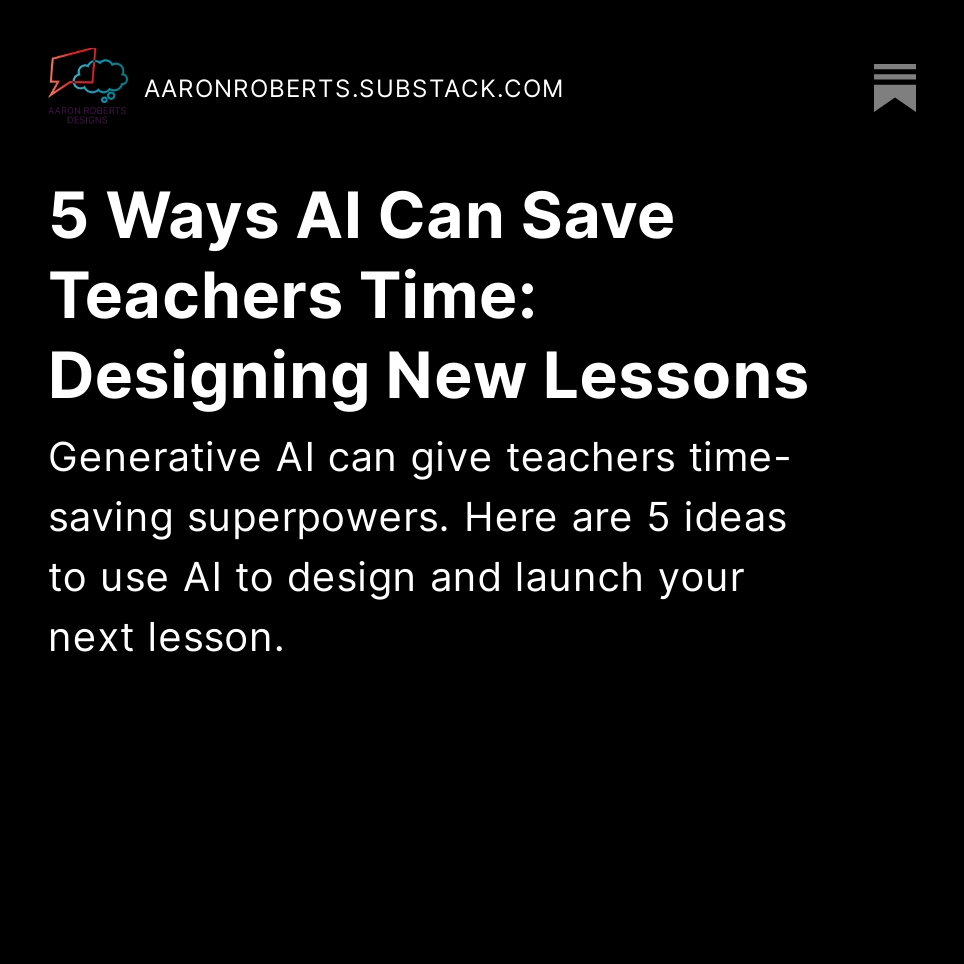

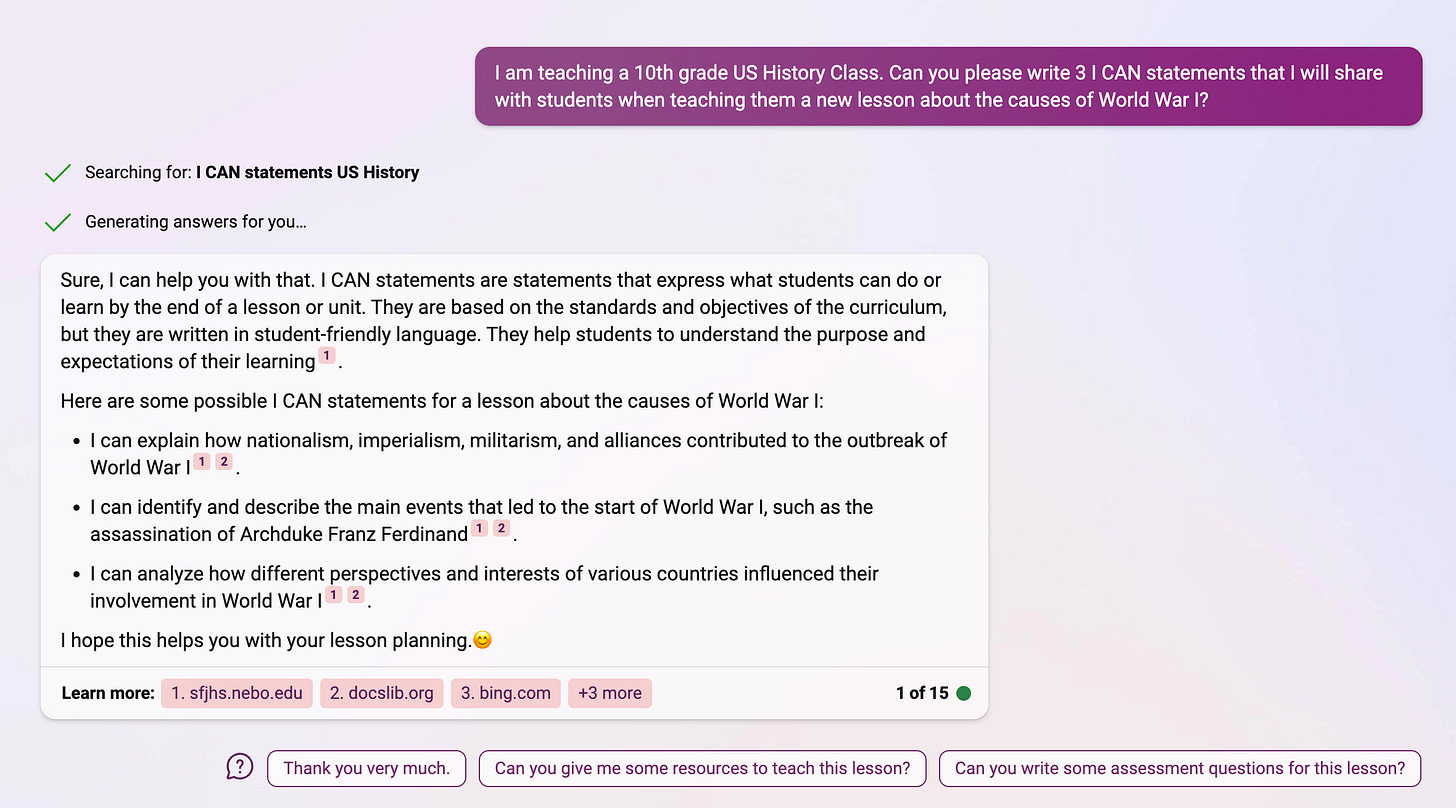
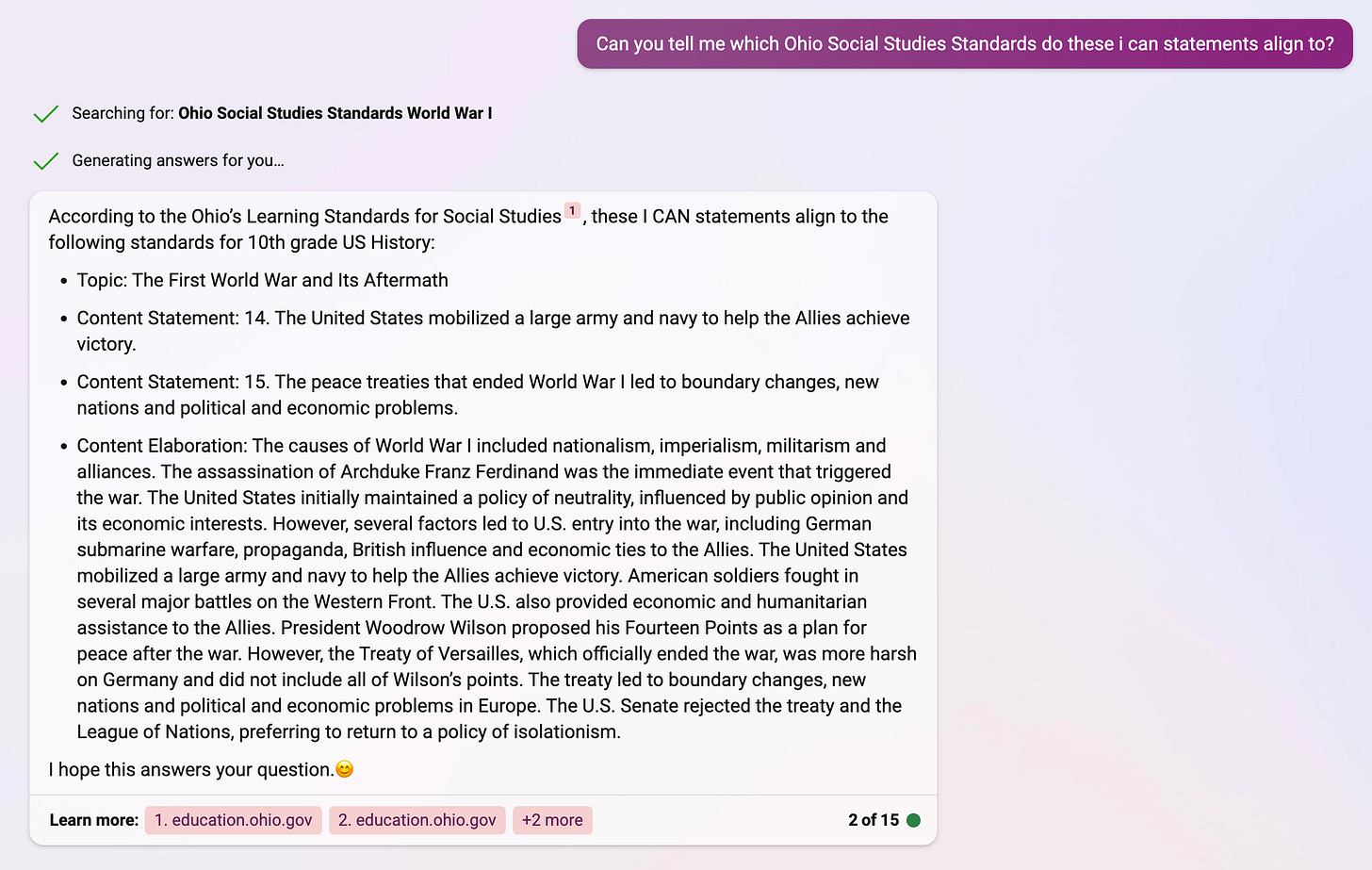
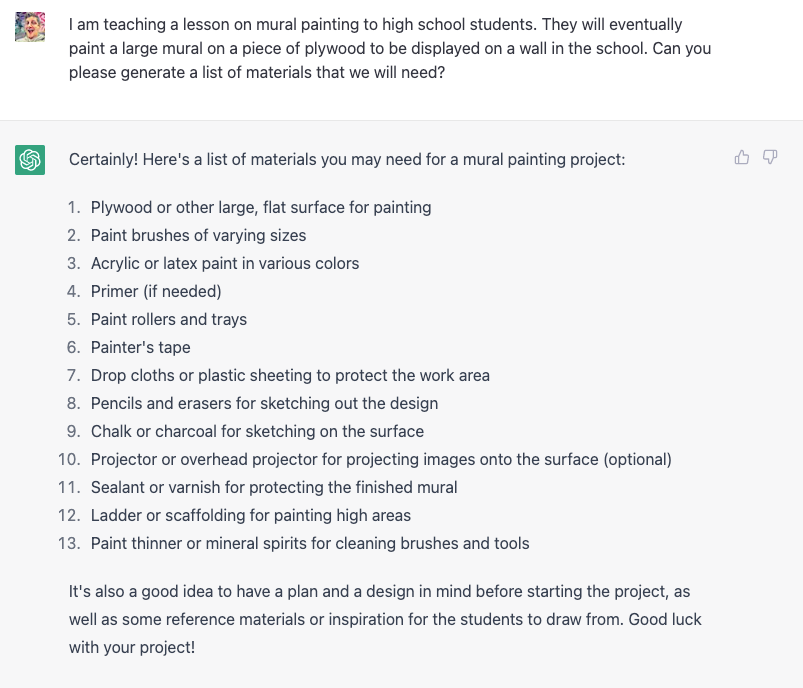
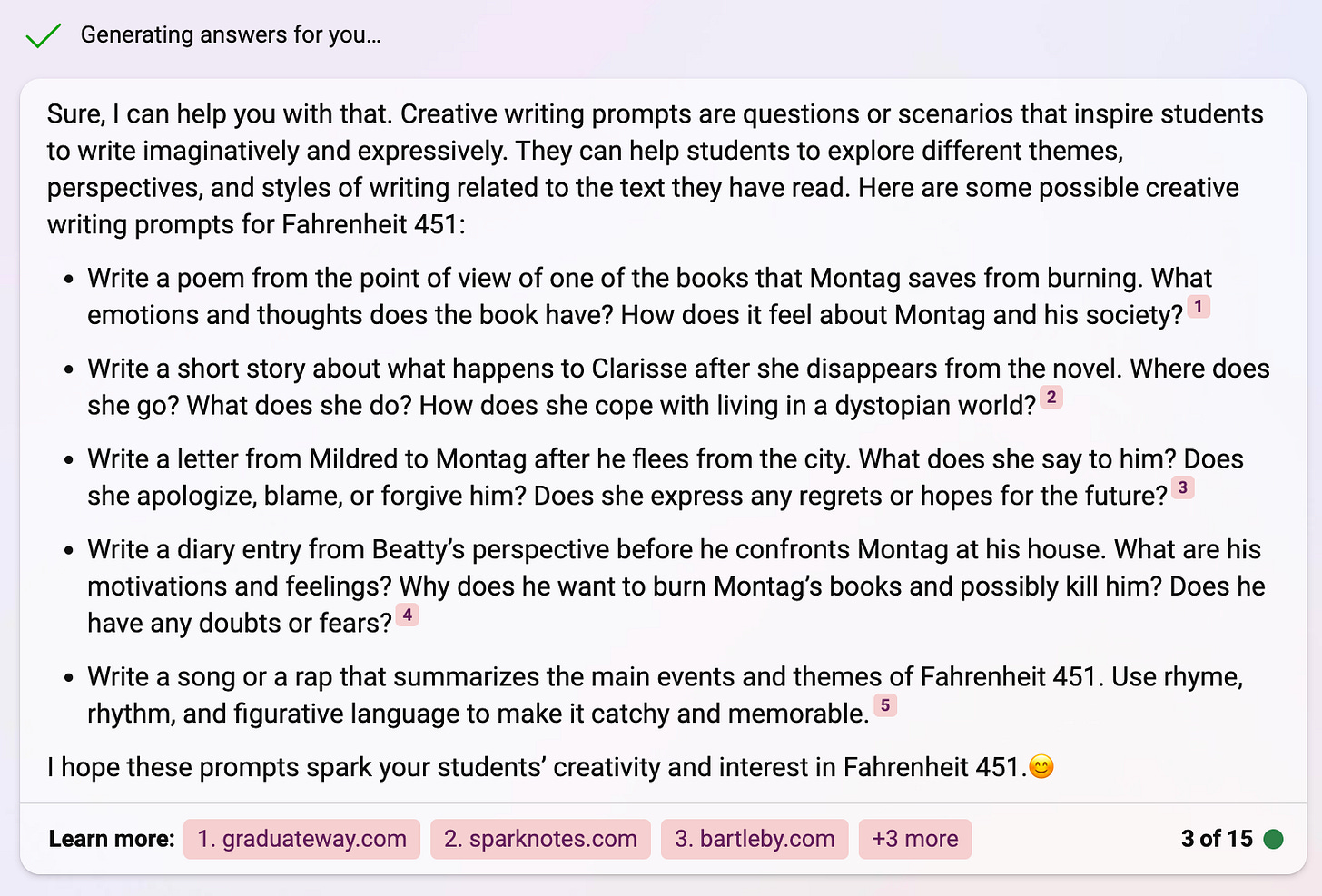
Great ideas Aaron! Bing helped me write the following perfect comment to your post...“AI can be a powerful tool for teachers to work smarter, not harder. By using AI to plan instruction, teachers can save time and energy that can be better spent on other important tasks. AI can help teachers identify areas where students need more support and provide personalized feedback to help students succeed. By working together with AI, teachers can create a more effective and efficient learning environment for their students.”